Does your kitchen need help?
 Not a helper to chop veggies or a sous chef—I’m talking organizational help. Looking for kitchen ideas? You’re not alone. In the past couple weeks, several friends have mentioned their kitchen needs work. Well, that’s what I DO, so I’m here to help in the kitchen. Think about the issues in your kitchen. What piles up, and where? Are your cabinets crammed with precarious stacks of bowls, pots and pans, and airtight containers?
Not a helper to chop veggies or a sous chef—I’m talking organizational help. Looking for kitchen ideas? You’re not alone. In the past couple weeks, several friends have mentioned their kitchen needs work. Well, that’s what I DO, so I’m here to help in the kitchen. Think about the issues in your kitchen. What piles up, and where? Are your cabinets crammed with precarious stacks of bowls, pots and pans, and airtight containers?
As I see it, people have two storage challenges with their kitchen. One, it’s a small kitchen and there isn’t enough space.
OR It’s spread out and has many cabinets, so time is wasted looking for things.
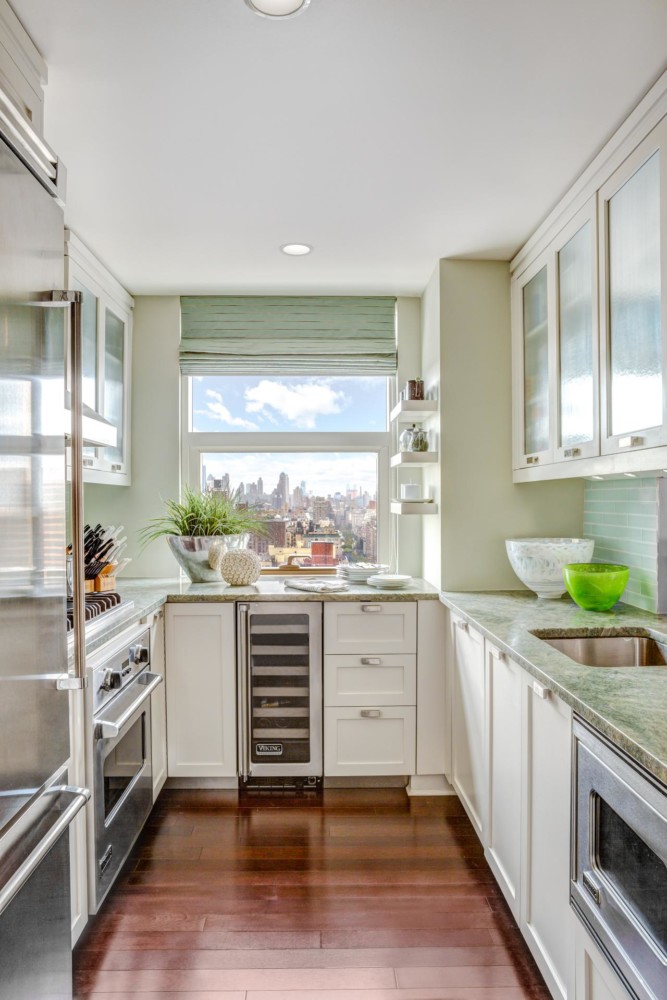 Many people have a small kitchen that doesn’t seem to have enough storage. Apartments, starter homes, and older homes tend to have small kitchens with woefully inadequate cabinet space. In my very first kitchen, I could barely open the oven without hitting our small table! At that time, I did not have many dishes or tools, so it wasn’t an issue.
Many people have a small kitchen that doesn’t seem to have enough storage. Apartments, starter homes, and older homes tend to have small kitchens with woefully inadequate cabinet space. In my very first kitchen, I could barely open the oven without hitting our small table! At that time, I did not have many dishes or tools, so it wasn’t an issue.
When I moved into my current house, I had the opposite challenge: too many cabinets. Imagine! After I unpacked my entire kitchen, I discovered I still had a double cabinet standing empty on the fringes. This is a good ‘problem’ to have. I ended up putting clear containers for the kids’ school keepers and art there.
With either situation, here is the best solution: establish a ‘home’ for everything in your kitchen.
Find a safe ‘HOME’ for kitchen stuff.
Appliances, dishes and tools can be tricky.
Ask yourself:
- Where am I going to use this item? Take the manual food chopper, for example. I love this tool and use it to chop onions often. But it is an odd size. It doesn’t fit in my large utensil drawer and I don’t want it in with my glasses and mugs. I needed it accessible, so I put it on an open corner shelf meant for knick-knacks near the kitchen sink. It makes sense because I generally chop onions about 1 step away from where it is stored. And as a bonus, the kids—who I regularly assign to chop onions—can see it, so they always put it back in the right place.
- How often am I going to use this item? A vegetable peeler needs to be handy, within arms’ length of where you use it, whereas a party platter can ‘live’ far from the hub of the kitchen, in one of the ‘fringe’ cupboards or a hard-to-reach area.
- Is this a seasonal item? Some things mainly get used in the summer or the winter. I hardly use my blender in the winter, for example, because I have a food processor and a stand mixer. So I put it away in the winter. Items used for summer parties, like popsicle molds, plastic platters and water-dispensing pitchers get put up high during the winter months. With a small kitchen, these items can be boxed in a clear plastic tote, labeled, and put in the garage or basement until their season arrives.
Eliminate these 5 easy tosses:
- Airtight food containers with no lids.
- Pots and pans or any item that you’ve replaced, holding onto the old one ‘just in case’ or for camping. Hint: Put it with camping stuff!
- Any appliance taking up space on the counter that you rarely use.
- Duplicates: Like platters, large bowls, pitchers.
- Any item that is cracked or damaged.
Small kitchen storage ideas
If your stuff is overflowing with dishes, tools and appliances, it’s time to purge. Here is some advice.
First: Take a hard look at what you have.
Do you use this? Is it really worth the space it’s using up? Is there an appliance you keep because you USED to us it, or one received as a wedding gift and feel guilty giving it away? Let it GO!
Second: Purge the items you don’t use or love.
Take them out of the kitchen. Put them into the garage or, better yet, the trunk of the car to get donated. Place them as close to their ultimate destination as possible.
Third: Put like with like.
Put all the small lids (ex.: canning jar lids) together in a small drawer or container. All airtight food containers go together. I store lids in a separate drawer, contained by a few clear boxes to make them easy to find.
Fourth: Do as much stacking as possible.
Mixing bowls, and even glass 13×9 pans can be stacked with a rubbery mat to keep them from chipping.
Fifth: Stand stuff like pot lids and platters up.
Look at my Pinterest page for creative ideas here. It’s much easier to retrieve platters which are standing up and separated by dowels or a partition. https://www.pinterest.com/jennyrossomorin/kitchen-organizing-ideas/
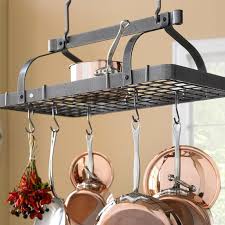 Sixth: A ceiling-mounted pot rack will hold a multitude of pots and pans!
Sixth: A ceiling-mounted pot rack will hold a multitude of pots and pans!
I used one in Vermont, and I loved it. If you need more storage space, look around. Is there an empty bit of wall to install a few hooks?
Seventh: Look inside.
Many people install small baskets inside cabinet doors to hold spices or essential oils. If you don’t want to drill into your cabinets, try sticky hooks. They are very strong and easily removable.
I hope these kitchen ideas help you!
Liked this post? Please share it on your social media of choice! Copy and paste this to share: https://efficientspacesco.c.wpstage.net/blog/
As always, if you need more help, check out my book on Amazon: Get Organized Quick. It has a chapter on keeping counters clear. With over 100 tips on organizing, it is a goldmine of ideas!
Click here for my book: https://www.amazon.com/Get-Organized-Quick-Minutes-Organize-ebook/dp/B01KKY30TS/ref=sr_1_1?ie=UTF8&qid=1524229138&sr=8-1&keywords=get+organized+quick
Resources:
https://www.diynetwork.com/how-to/rooms-and-spaces/kitchen/8-ways-to-make-a-small-kitchen-sizzle. Photo credit for galley kitchen image.
Pot rack image courtesy Bed Bath and Beyond.


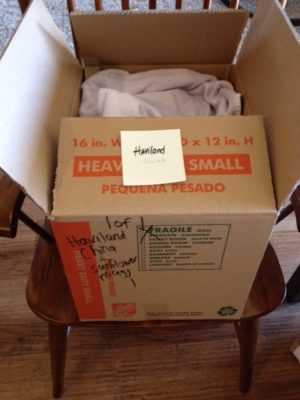

 thrift stores. So, once a year, I celebrate by having a little fun with the 12 days of Christmas poem. This new and improved 12 days has 12 tips to make your holiday prep less stressful!
thrift stores. So, once a year, I celebrate by having a little fun with the 12 days of Christmas poem. This new and improved 12 days has 12 tips to make your holiday prep less stressful! Tip: Take out one decoration that really inspires you. For me, a homemade advent calendar does the trick. Each pocket has 1 simple activity and a small ornament inside. Keep it simple, silly!
Tip: Take out one decoration that really inspires you. For me, a homemade advent calendar does the trick. Each pocket has 1 simple activity and a small ornament inside. Keep it simple, silly! pre-lit ceramic tree.
pre-lit ceramic tree.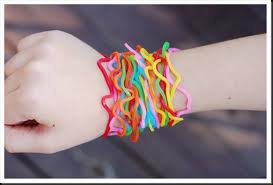 my client gave to me: 5 silly bands, 4 Rolodexes, 3 rubber chickens, 2 Kleenex boxes, and a pre-lit ceramic tree.
my client gave to me: 5 silly bands, 4 Rolodexes, 3 rubber chickens, 2 Kleenex boxes, and a pre-lit ceramic tree. the 6th day of Christmas, my client gave to me:6 sticky jelly beans, 5 silly bands, 4 Rolodexes, 3 rubber chickens, 2 Kleenex boxes, and a pre-lit ceramic tree.
the 6th day of Christmas, my client gave to me:6 sticky jelly beans, 5 silly bands, 4 Rolodexes, 3 rubber chickens, 2 Kleenex boxes, and a pre-lit ceramic tree.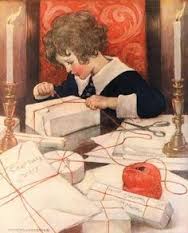 cushions! Just like everything else, make a plan for when to clean certain areas of the house. If you’re having guests one night, remember don’t spend too much time on the floors, they’re just going to get dirty again! Do a quick clean before and a thorough clean after!
cushions! Just like everything else, make a plan for when to clean certain areas of the house. If you’re having guests one night, remember don’t spend too much time on the floors, they’re just going to get dirty again! Do a quick clean before and a thorough clean after! he 8th day of Christmas, my client gave to me: 8 singing fish, 7 gift bags, 6 sticky jelly beans, 5 silly bands, 4 Rolodexes, 3 rubber chickens, 2 Kleenex boxes, and a pre-lit ceramic tree.
he 8th day of Christmas, my client gave to me: 8 singing fish, 7 gift bags, 6 sticky jelly beans, 5 silly bands, 4 Rolodexes, 3 rubber chickens, 2 Kleenex boxes, and a pre-lit ceramic tree.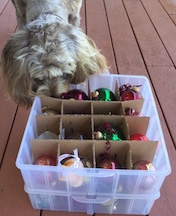 wrap or brown packing paper to keep them safe (newsprint may rub off on ornaments). Or make your life even easier by investing in a nifty bulb storage container. Craft or home stores carry these.
wrap or brown packing paper to keep them safe (newsprint may rub off on ornaments). Or make your life even easier by investing in a nifty bulb storage container. Craft or home stores carry these. on’t forget to make it fun—play music and movies! While you are wrapping or decorating, crank up the Christmas carols or The Messiah by the Tabernacle Choir at Temple Square! A great way to store your holiday CD’s is a simple shoe box with a label. You can even store them with your Christmas decorations to save on shelf space during the year. (As long as the temperature doesn’t rise above 90 degrees in your storage area.)
on’t forget to make it fun—play music and movies! While you are wrapping or decorating, crank up the Christmas carols or The Messiah by the Tabernacle Choir at Temple Square! A great way to store your holiday CD’s is a simple shoe box with a label. You can even store them with your Christmas decorations to save on shelf space during the year. (As long as the temperature doesn’t rise above 90 degrees in your storage area.)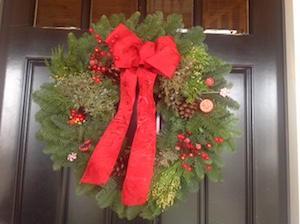

 Spaces
Spaces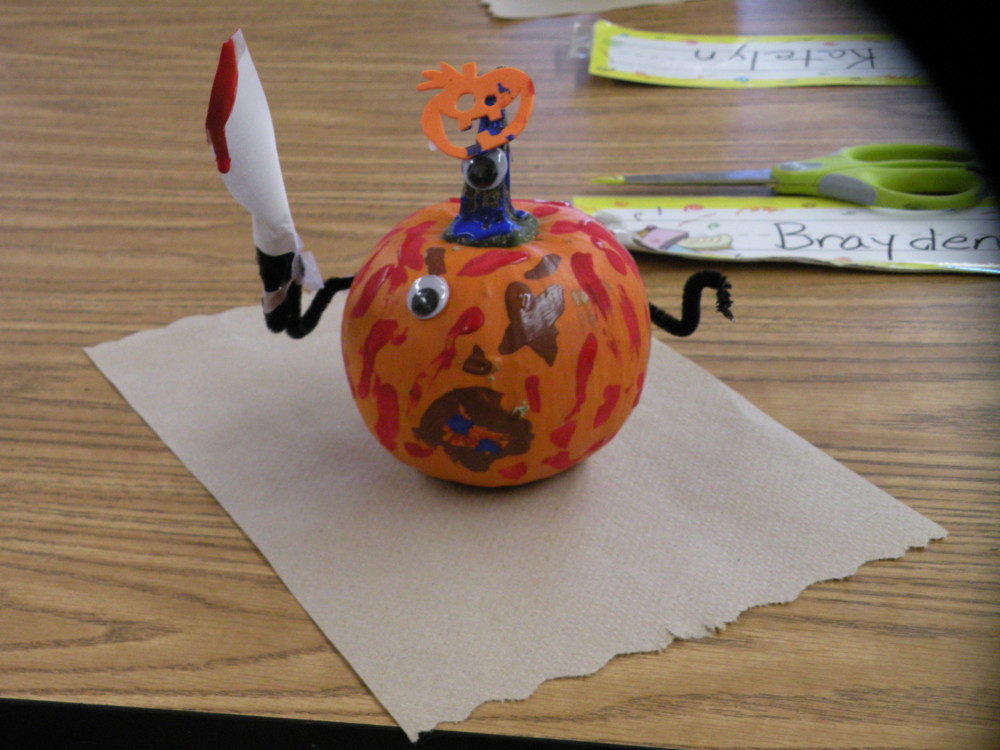 ommates. Once you’ve created a home for everything, take a labeler or some sticky tape and a marker, then go label happy! It doesn’t have to be a beautiful, perfect labeling system like you see on Pinterest, as long as you can read it, that’s all you need.
ommates. Once you’ve created a home for everything, take a labeler or some sticky tape and a marker, then go label happy! It doesn’t have to be a beautiful, perfect labeling system like you see on Pinterest, as long as you can read it, that’s all you need.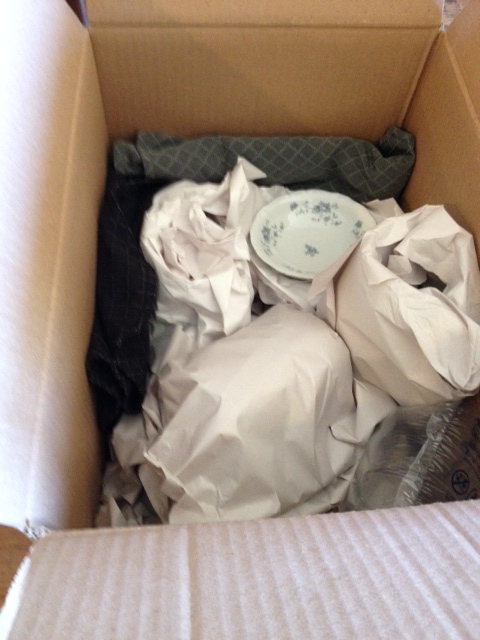
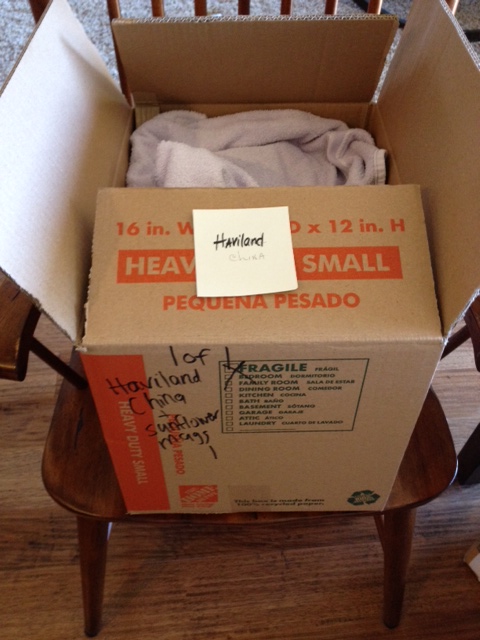

 They might whine and complain for the first few minutes, but if you are willing to spend the time with children to train them, to show them how to clean or stack wood, they will come to enjoy it. When the kids are young, they want to be like Mommy and Daddy. They see us doing dishes or using the vacuum, and they want to try it. Let them! Show them how to do simple jobs when their interest is piqued.
They might whine and complain for the first few minutes, but if you are willing to spend the time with children to train them, to show them how to clean or stack wood, they will come to enjoy it. When the kids are young, they want to be like Mommy and Daddy. They see us doing dishes or using the vacuum, and they want to try it. Let them! Show them how to do simple jobs when their interest is piqued.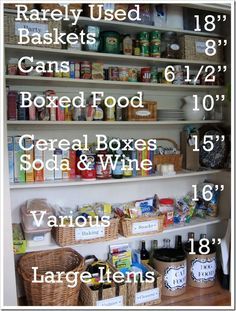
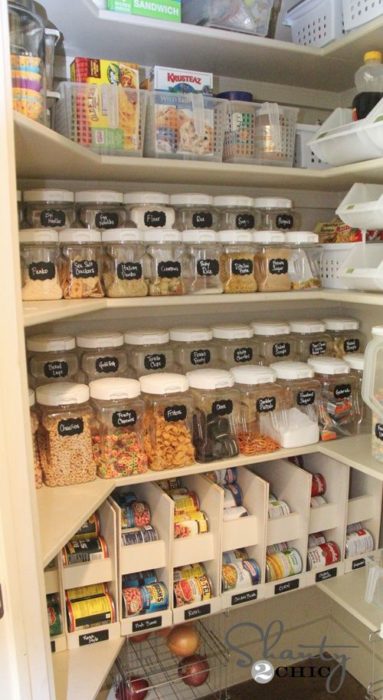 What does a Mom really want for Mother’s Day? (It’s not chocolate.) How about something that will last: an organized pantry!
What does a Mom really want for Mother’s Day? (It’s not chocolate.) How about something that will last: an organized pantry! . Have a picture to guide you, and use this handy organization tool on my Pinterest board for ideas on where to put foodstuffs.
. Have a picture to guide you, and use this handy organization tool on my Pinterest board for ideas on where to put foodstuffs. Try creative solutions for the deep corners in your pantry. I measured them, then ordered a few Lazy Susans to fit. Now they hold cans and jars. Just need to spin it to see what you have!
Try creative solutions for the deep corners in your pantry. I measured them, then ordered a few Lazy Susans to fit. Now they hold cans and jars. Just need to spin it to see what you have!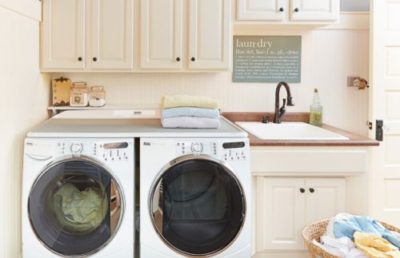
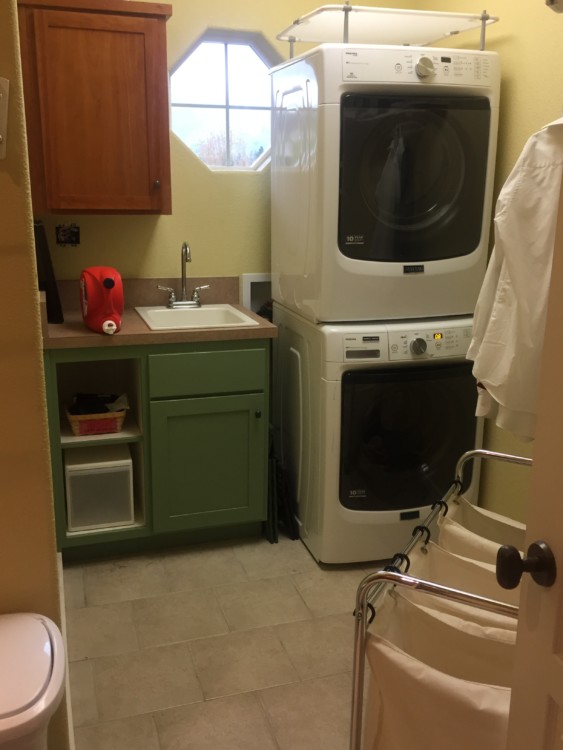 Last year, I remodeled my laundry room. Quite a process. I thought it would be this easy little project. Wrong! A lot goes into a laundry room, literally. I started out with my inspiration: a picture I clipped from a magazine.
Last year, I remodeled my laundry room. Quite a process. I thought it would be this easy little project. Wrong! A lot goes into a laundry room, literally. I started out with my inspiration: a picture I clipped from a magazine. Space saving idea #2: Utilize your wall space.
Space saving idea #2: Utilize your wall space.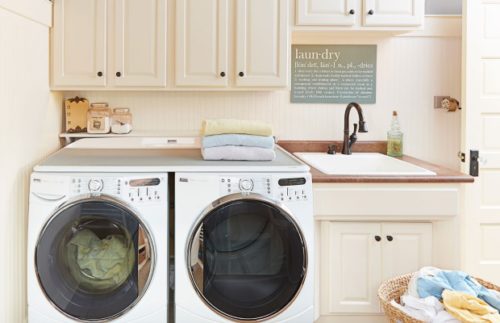 Don’t forget the ceiling!
Don’t forget the ceiling! Just notice and jot down what stuff is lying around on your washer, dryer, the floor, and any counters in there. What do you have too much of? Whatever you don’t have a place for ends up as clutter, so give it a home. And if your answer was too much laundry . . . I do too!
Just notice and jot down what stuff is lying around on your washer, dryer, the floor, and any counters in there. What do you have too much of? Whatever you don’t have a place for ends up as clutter, so give it a home. And if your answer was too much laundry . . . I do too!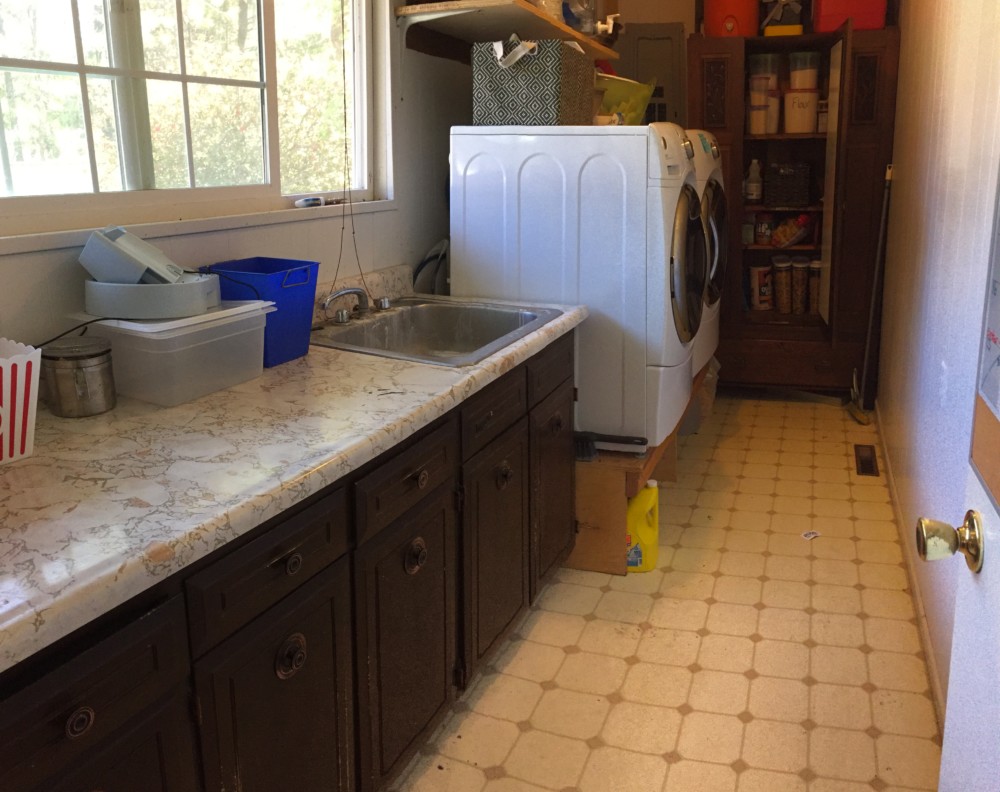 Collect some pictures for inspiration. I actually stumbled across my dream laundry room in a magazine while in a waiting room. A link to the article is in the Resources section. Also, search for solutions to your unique issues. Just use your search engine and see what pictures come up. You will be amazed!
Collect some pictures for inspiration. I actually stumbled across my dream laundry room in a magazine while in a waiting room. A link to the article is in the Resources section. Also, search for solutions to your unique issues. Just use your search engine and see what pictures come up. You will be amazed!

